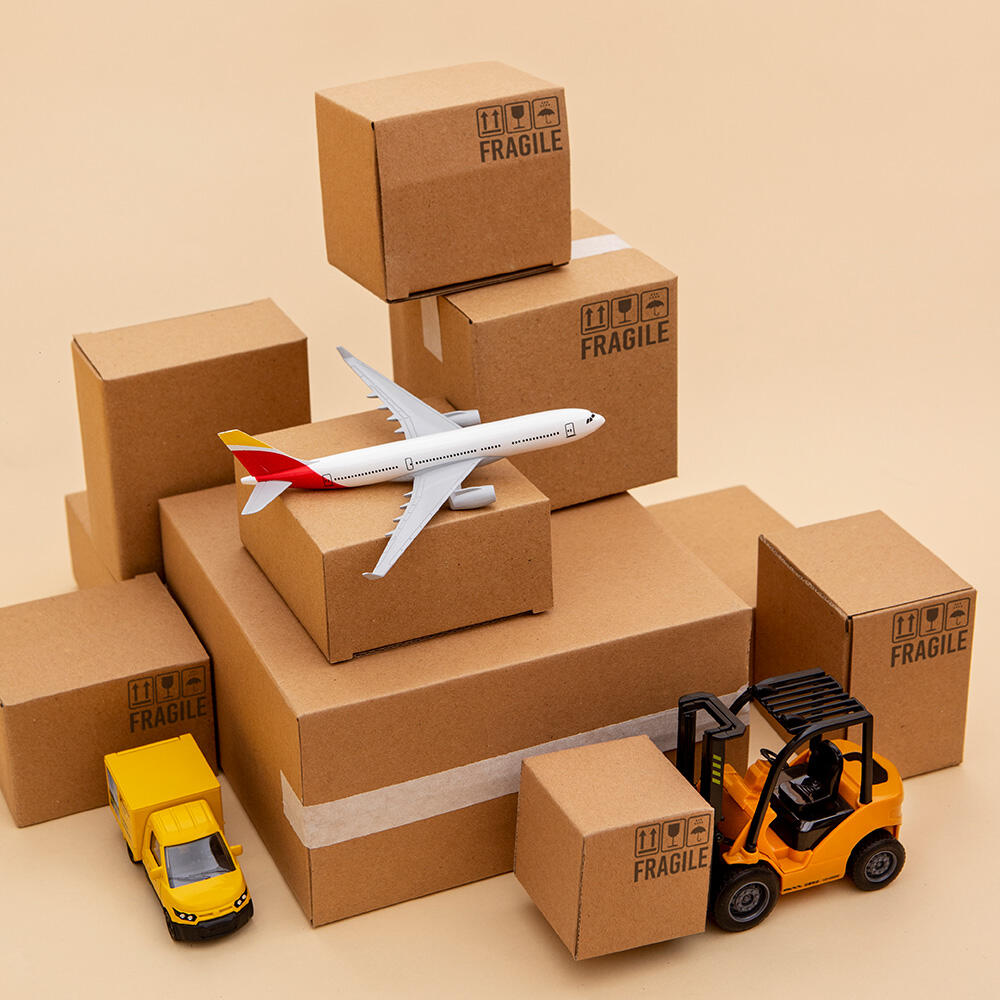Optimizing Last-Mile Delivery: Core of United Road Logistics Operations

The Challenge of Last-Mile Delivery in Modern E-Commerce Logistics
The last mile of delivery still poses the biggest headache and eats up a huge chunk of money in supply chain operations. Some studies put it at around half of all logistics costs, which makes sense when looking at what companies face day to day. Think about it urban traffic is terrible, customers want packages delivered yesterday, and delivery slots get split into tiny time frames that barely work for drivers. United Road Logistics has been tackling this mess by building out micro fulfillment centers right near big cities, usually within about 15 miles radius. These smaller hubs let them cut down on travel time and respond faster to local demand spikes without having to ship everything from distant warehouses.
Route Optimization Algorithms Reducing Delivery Times by 30%
Advanced algorithms process real-time traffic patterns, weather data, and delivery constraints to dynamically adjust routes. These systems reduced missed delivery windows by 28% in recent pilot programs while cutting average fuel consumption by 19%. Machine learning models analyze historical delivery performance across 120+ variables to predict optimal departure times and vehicle configurations.
Real-Time Delivery Tracking and Customer Communication Enhancing Transparency
GPS-enabled tracking systems update customers every 15 minutes via SMS or app notifications, reducing inbound inquiry calls by 42%. Two-way communication channels let recipients reschedule deliveries mid-route, decreasing failed delivery attempts by 33%. The platform's geofencing technology automatically alerts drivers when approaching high-risk delivery zones identified through historical theft data.
Case Study: Same-Day Delivery Success in Urban Supply Chain Networks
In a 12-month trial across Chicago's metro area, United Road Logistics Operations achieved 97.4% on-time delivery rates for temperature-sensitive pharmaceuticals. The solution combined:
- Dynamic cluster routing that grouped deliveries by building accessibility scores
- Predictive parking analysis using municipal permit databases
- AI-powered load balancing between sprinter vans and e-cargo bikes
This approach reduced average delivery costs by $8.73 per stop while maintaining product integrity through IoT-enabled temperature monitoring—a critical factor in healthcare logistics compliance.
Digital Transformation and Supply Chain Visibility in United Road Logistics
Migrating from Legacy Systems to Cloud-Based Logistics Management Platforms
Leading logistics operations are transitioning from obsolete systems to cloud-based platforms, achieving 22% faster data processing speeds according to 2024 supply chain studies. This modernization enables real-time collaboration across warehouses, carriers, and customers while maintaining compliance with evolving cybersecurity standards.
Integrated Data Hubs for End-to-End Supply Chain Visibility
Modern visibility strategies now center on unified data lakes that aggregate information from IoT sensors, warehouse management systems, and partner networks. Organizations using these centralized hubs report 40% fewer shipment exceptions through predictive issue detection algorithms.
Balancing Real-Time Monitoring with Data Privacy Concerns
While live freight tracking enhances operational transparency, logistics leaders mitigate risks by implementing AES-256 encryption and granular access controls. A 2023 cybersecurity assessment found properly configured monitoring tools reduce breach incidents by 58% compared to legacy systems, ensuring compliance with regulations like GDPR without sacrificing visibility depth.
AI and Machine Learning: Driving Data-Driven Decisions in Logistics

AI-Powered Demand Forecasting in Warehouse Supply and Demand Management
Logistics departments are now using machine learning algorithms to forecast inventory requirements about 89 percent more accurately compared to old school methods according to Supply Chain Quarterly from last year. These smart systems look at past sales numbers, seasonality factors, plus outside influences such as unexpected weather events when making recommendations about stock levels. Last year's test run showed some pretty impressive results too - companies saved around seven hundred forty thousand dollars on excess inventory costs without dropping below 99.2% for filling customer orders. Traditional forecasting approaches just can't keep up because they don't change with new information. But AI powered models constantly update themselves whenever there are supply chain hiccups or unexpected surges in demand, allowing warehouses and distribution centers to react much faster throughout their entire network.
Machine Learning Models for Logistics Network and Fleet Optimization
Big logistics companies are increasingly turning to neural networks for things like figuring out better delivery routes, managing how much weight goes on each truck, and assigning vehicles properly. A particular algorithm implemented last year cut down on those frustrating empty truck trips across country by about 22%, according to Logistics Tech Journal from earlier this year. The same system also shaved roughly 30 minutes off most deliveries. These advanced systems chew through massive amounts of data every day including where trucks actually are via GPS, what traffic looks like right now, and even current fuel costs before suggesting new paths. Take AI powered dispatch tools for instance they constantly watch road conditions and can send entire fleets away from construction sites as they happen. This has made a real difference in cities where traffic jams are common, reducing the amount of time trucks just sit there idling by nearly half in some cases.
Predictive Analytics for Vehicle Maintenance in Fleet Management
Gone are the days of rigid maintenance calendars. Today's sensor tech combined with machine learning can spot potential parts failures about two weeks ahead of time with almost 93% accuracy, which is roughly double what traditional inspection methods achieve. Companies that jumped on board early tell us they're seeing around 30% fewer cars breaking down on the side of the road, plus saving close to $1.2 million each year just on repairs according to industry reports from last year. These smart systems look at all sorts of information together including engine health readings, how drivers actually handle their vehicles day to day, and historical data about when different components tend to wear out. As a result, mechanics know exactly what needs attention first, and this approach tends to keep commercial vehicles running smoothly for another couple of years beyond their expected lifespan.
These AI-driven strategies position United Road Logistics Operations at the forefront of data-powered supply chain innovation, transforming reactive logistics into precision-guided systems.
Fleet and Fuel Efficiency Optimization in United Road Logistics Operations
Telematics and GPS Analytics Improving Fleet Fuel Efficiency
Logistics companies these days are cutting down on fuel costs thanks to smart telematics systems that keep track of how drivers handle their vehicles, what's happening with engines, and when trucks just sit idling unnecessarily. The GPS stuff isn't just for navigation anymore either it helps spot all sorts of problems on the road from people flooring it too much to routes that go up hills way too often. A recent industry study from 2025 showed something pretty impressive fleets that implemented these tech solutions saw around 12 to maybe even 18 percent less wasted fuel each year. This happens because the data lets managers coach drivers better and catch maintenance issues before they become big money drains.
Dynamic Routing for Cost Savings in Transportation Operations
Dynamic routing algorithms leverage real-time traffic, weather, and road condition data to minimize fuel-intensive detours and idle times. Leading logistics operators report 15—22% fewer empty miles traveled after adopting AI-powered routing tools. These systems prioritize routes with optimal fuel economy while balancing delivery windows, reducing both costs and carbon footprints.
Case Study: 18% Reduction in Fuel Consumption Across Regional Hubs
A regional hub network achieved an 18% fuel reduction over eight months by combining telematics insights with dynamic routing. Key strategies included:
- Retiring underutilized vehicles identified through GPS utilization reports
- Reprogramming routes to avoid steep inclines and congestion hotspots
-
Training drivers using telematics data on fuel-efficient acceleration patterns
This initiative cut annual fuel expenses by $2.1 million while maintaining 99.2% on-time delivery rates, demonstrating the scalability of data-driven optimization.
Enhancing Customer Experience Through Delivery and Returns Management
Seamless Returns Processes as a Competitive Advantage in E-Commerce
A frictionless returns process increases customer retention by 28% while reducing operational costs (Ponemon 2023). Leading logistics providers now automate return label generation and offer multiple drop-off locations, slashing processing times by 40%. This strategic shift transforms potential dissatisfaction into loyalty drivers—74% of consumers report higher repurchase intent after positive return experiences.
Meeting Customer Expectations with On-Time Deliveries
Companies maintaining 95%+ on-time delivery rates achieve 40% higher repeat order volumes. Advanced route optimization tools enable dynamic adjustments for traffic patterns and weather disruptions, ensuring delivery windows are met 19% more consistently than traditional methods. Proactive delay alerts via SMS or app notifications further reduce customer service inquiries by 32%.
Rising Demand for Real-Time Delivery Updates and Proactive Communication
87% of online shoppers now expect minute-by-minute tracking comparable to ride-sharing apps. Cloud-based logistics platforms meet this demand through GPS-enabled driver tracking and automated ETA revisions. When coupled with branded tracking portals showing delivery progress and product recommendations, customer satisfaction scores improve by 22% (Ponemon 2023).
These customer-centric strategies position United Road Logistics Operations as industry leaders, bridging operational efficiency with elevated brand loyalty.
FAQ
What is last-mile delivery and why is it challenging?
Last-mile delivery refers to the final leg of transporting goods to the customer. It's challenging because it involves navigating urban traffic, meeting tight delivery windows, and managing customer expectations for speedy service.
How are micro fulfillment centers beneficial?
Micro fulfillment centers, located near urban areas, significantly reduce travel time and enhance responsiveness to local demand spikes, allowing companies to manage deliveries more efficiently.
What role does AI and machine learning play in logistics?
AI and machine learning enhance logistics by optimizing routes, predicting demand and inventory needs, and streamlining fleet management, thereby reducing costs and improving efficiency.
How can logistics companies improve fuel efficiency?
Telematics and GPS analytics help track driver behavior and vehicle performance, while dynamic routing algorithms optimize paths to prevent fuel waste and enhance efficiency.
Table of Contents
- Optimizing Last-Mile Delivery: Core of United Road Logistics Operations
- Digital Transformation and Supply Chain Visibility in United Road Logistics
- AI and Machine Learning: Driving Data-Driven Decisions in Logistics
- Fleet and Fuel Efficiency Optimization in United Road Logistics Operations
- Enhancing Customer Experience Through Delivery and Returns Management
- FAQ

